
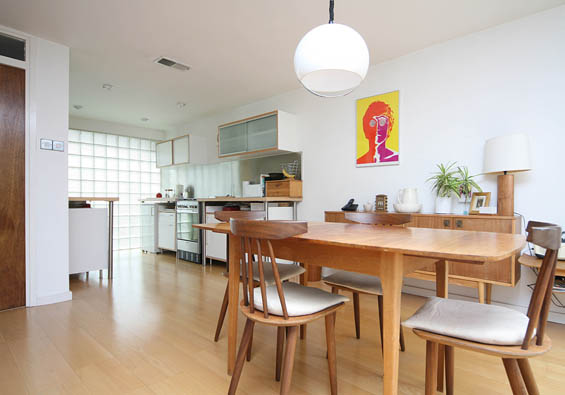
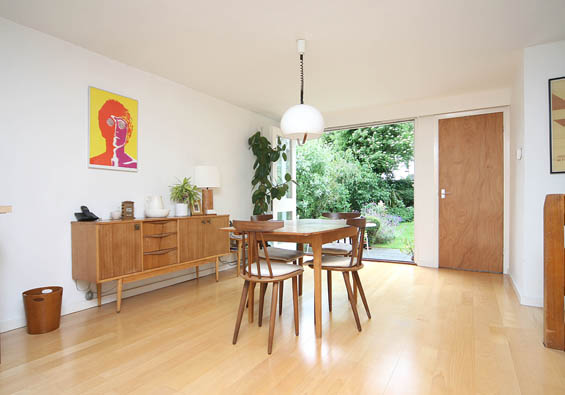
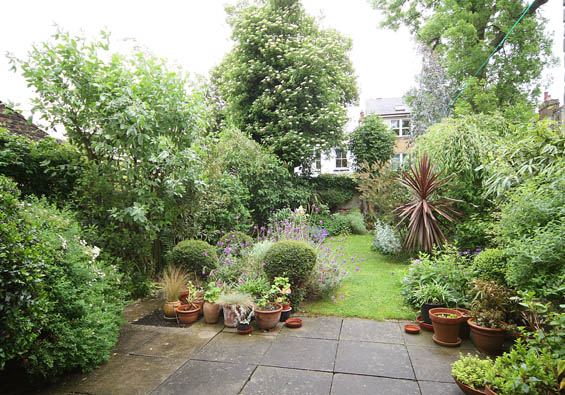
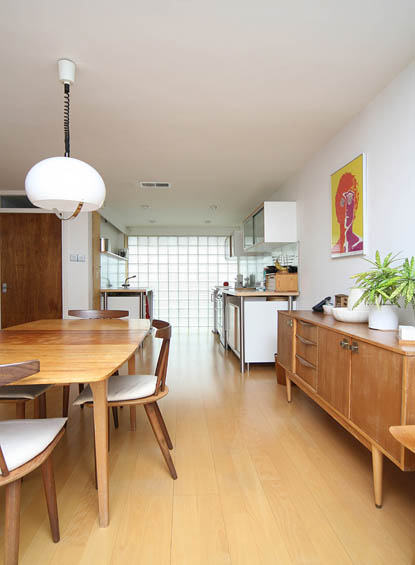
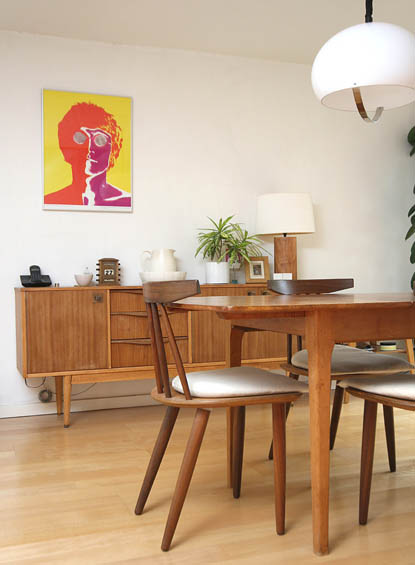
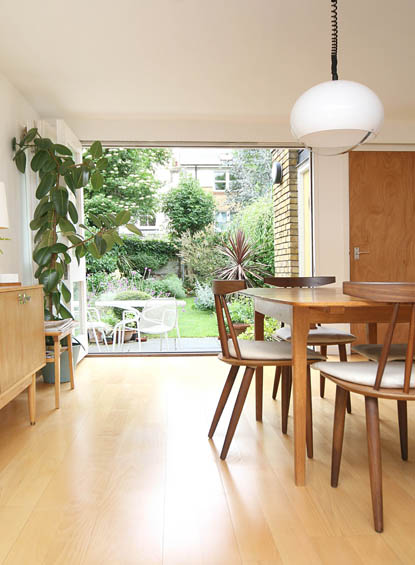
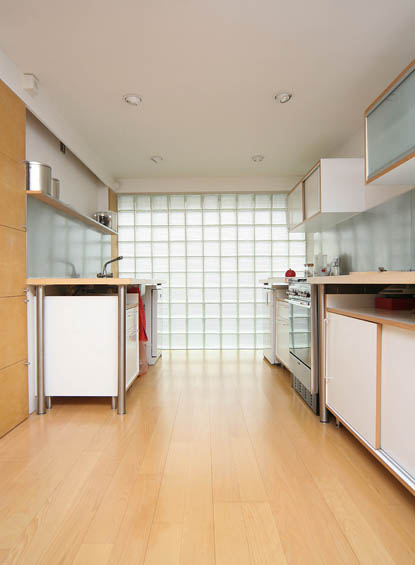
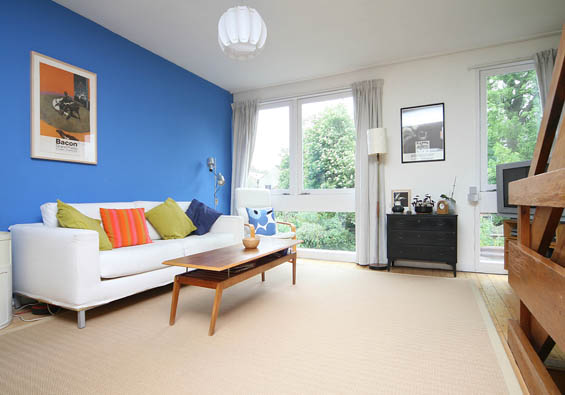
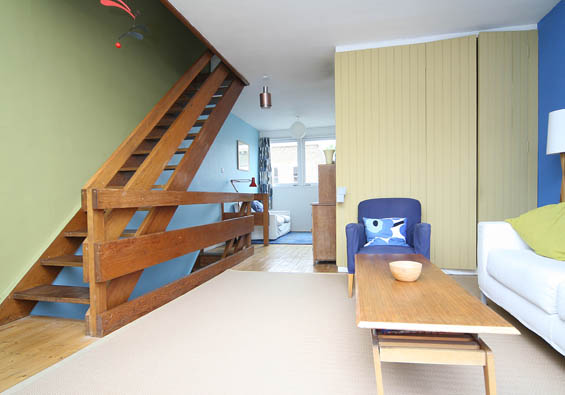
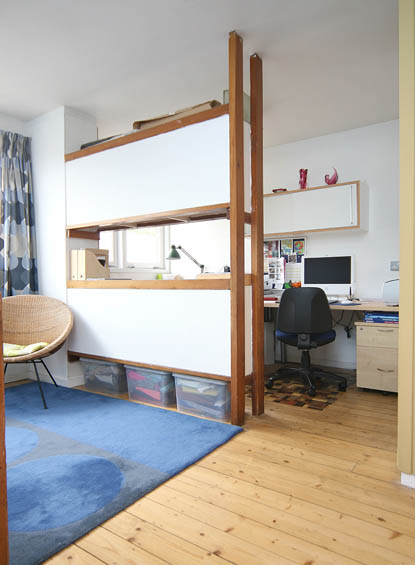
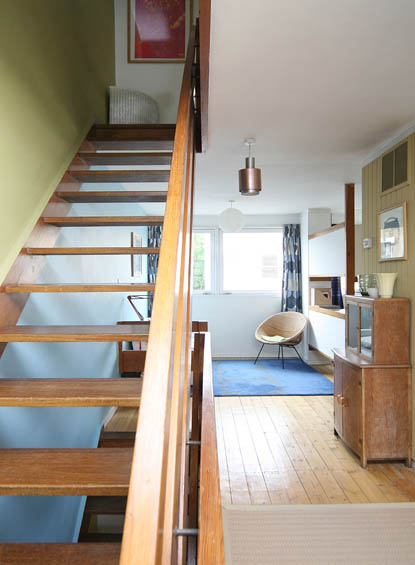
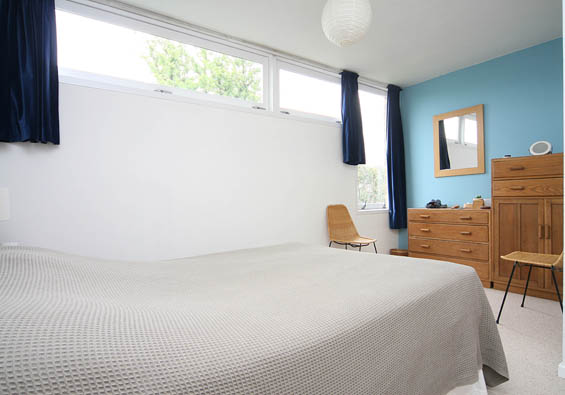
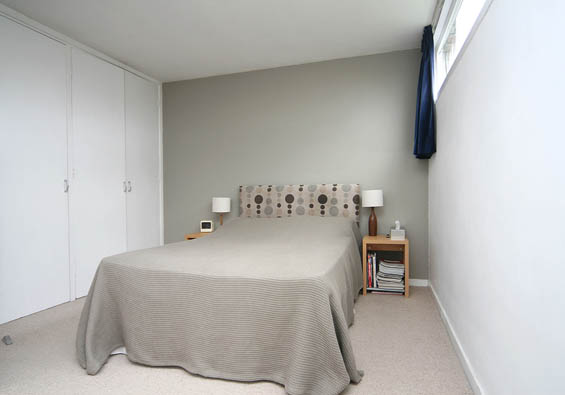
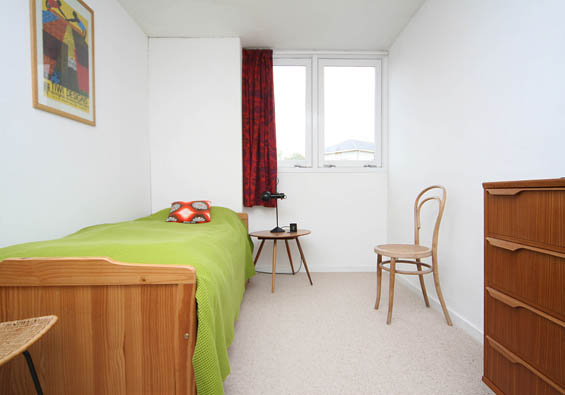
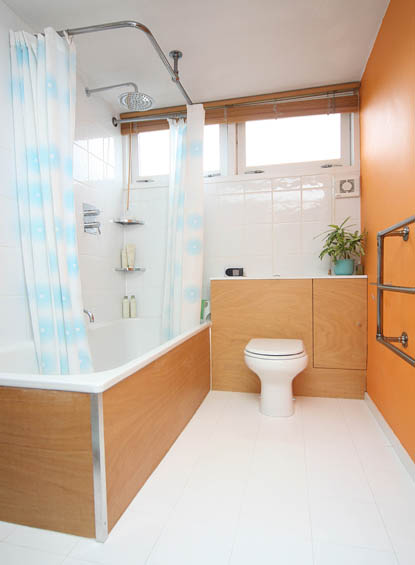
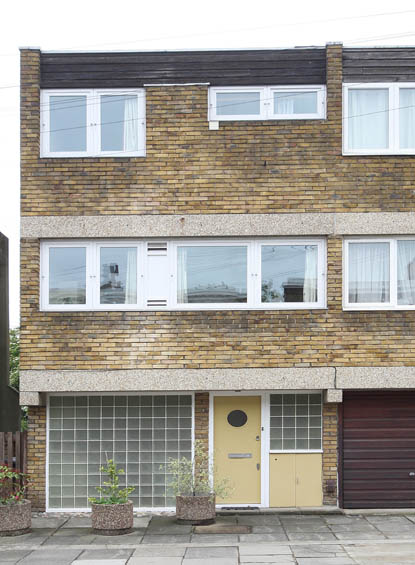
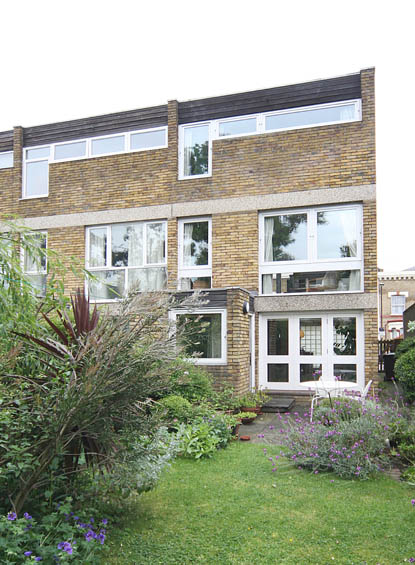
Horsford Road
London SW2
Architect: Edward Hollamby
Register for similar homesThis charming three-storey 1960s house with garden forms part of a small terrace designed by Edward Hollamby, located on an attractive and quiet residential street. This particular house was sympathetically renovated approximately eight years ago.
The ground floor formerly contained an internal garage and a bedroom, but this has been opened out to form a bright kitchen and dining room using vintage 1930s glass bricks inserted into the front elevation. There is also a generous utility room.
On the first floor is a well-proportioned reception room with leafy views over the garden, and a study/sitting area at the front where the kitchen used to be. The second floor contains two double bedrooms, both with built-in storage, and a bathroom.
The interior is presented in very good condition, with original features including an open-tread staircase, a timber room divider / storage unit on the first floor, and original doors and door furniture throughout. The windows on the first and second floors have been replaced with timber-framed double-glazed units in keeping with the originals. A few years ago the current owners also replaced the covering for the flat roof, and added extra insulation. They have added under-floor heating on the ground floor; the upper floors have retained the original warm-air heating system, which is run from a separate boiler.
The house and its terrace are one of a small handful of modern houses designed for infill sites by the talented Lambeth borough architect Edward Hollamby, who had previously worked under Leslie Martin (architect of the Royal Festival Hall). For more information, see the History section below.
Horsford Road is a quiet residential street off Brixton Hill. Brixton Underground station is a short walk away, offering quick links to central London via the Victoria Line. All of the shops and facilities of Brixton and Clapham are close at hand, and open space can be found at Brockwell Park to the east and Clapham Common to the west. Click here for a MAP.
Please note that all areas, measurements and distances given in these particulars are approximate and rounded. The text, photographs and floor plans are for general guidance only. The Modern House has not tested any services, appliances or specific fittings — prospective purchasers are advised to inspect the property themselves. All fixtures, fittings and furniture not specifically itemised within these particulars are deemed removable by the vendor.




History
This house forms part of a small terrace built on an infill site. It was designed by the Lambeth borough architect Edward Hollamby, who devised a house “type” to suit a small handful of sites at locations including Lowden Road, Kestrel Avenue, St James’s Crescent, Meadow Road and Stockwell Park Crescent.
The houses had a garage, a guest bedroom / study and a utility room on the ground floor, a living room, small kitchen and dining room on the first floor, and two double bedrooms and a bathroom on the second floor. They were built using simple brick cross-wall construction with timber floors and roofs. Stylistically, they call to mind the ‘Span’ houses of Eric Lyons. Much like Lyons, Hollamby was careful to retain existing trees wherever possible.
In January 2000, Jonathan Glancey wrote the following obituary on Hollamby in The Guardian:
“Edward ‘Ted’ Hollamby, who has died aged 78, was very much an
architect of the 20th century, a public servant who believed not just
in high-quality architecture but in the existence and nurturing of the
public realm, of public architecture and civic design.
“If these
words sound old-fashioned, that is because Hollamby, educated first at
the Hammersmith School of Arts & Crafts, was also a lifelong
devotee of the great socialist arts & crafts thinker and doer,
William Morris. In 1952, Hollamby, a founder member of the William
Morris Society, bought the Red House, Bexleyheath. This important brick
building was designed by Philip Webb for Morris in 1859. Its influence
was out of all proportion to its size. Here was a modern yeoman’s home,
asymmetrically arranged, its style drawn from the vernacular. It became
a kind of touchstone and even a shrine for arts & crafts
practioners.
“Hollamby and his wife Doris, whom he married in
1941, and with whom he had three children, were devoted to the Red
House, and to them we owe its meticulous restoration. At the time they
moved in the property was in a shabby state after years of war service
with the national assistance board. During the war, Hollamby served
with the Royal Marine engineers.
“Like so many architects of his
generation, Hollamby pursued a career in local authority offices. He
was architect to the Miners’ Welfare Commission from 1947 to 1949,
senior architect with the London County Council (LCC) 1949-62, and,
having moved to the London borough of Lambeth, rose to become director
of architecture, planning and development, a position he held from 1969
to 1981.
“The LCC architects’ department had long been infused
with the ideas of Morris and John Ruskin. The handsome and humane arts
& crafts style estates it built, beginning with the Boundary
estate, Shoreditch, at the very end of the 1890s, were admired
worldwide. Architects like Hollamby continued and developed this
tradition, although after the second world war the spirit of the modern
movement pervaded what were dynamic local authority offices.
“These
were exciting and challenging places to work in the 1950s and 1960s,
attracting the very best young architects and with the focus very much
on housing. Of course there were mistakes, yet the energy and concern
that were channelled into the civic realm seem flabbergasting at the
beginning of the 21st century, at the close of an era which has
witnessed both the triumph of the private sector and the effective
collapse of the great public sector architects’ offices of the postwar
era.
“The LCC office which Hollamby joined in 1949 was very much
under the intellectual thumb of Leslie Martin, principal architect of
the Royal Festival Hall. Here, the influence of the latest Scandinavian
design met with the powerful formal ideas of Le Corbusier, both laced
through with the arts & crafts principles of Ruskin and Morris.
Hollamby, with the LCC and Lambeth, worked on a prodigious number of
housing schemes, including the controversial study for Thamesmead, the
futuristic new town that Stanley Kubrick used to sinsister effect in
the filming of A Clockwork Orange.
“New estates were matched by
considerable conservation work, including the restoration of public
parks and a major investment in doctors’ surgeries, sheltered housing,
old peoples’ homes, community and health centres. Although initially
caught up with schemes to build 30-storey housing blocks in south
London – his unrealised proposals for the high-rise redevelopment of
Brixton were perhaps the most controversial – Hollamby was to become a
champion of modern low- rise estates responsive to topography and local
conditions.
“The architectural tide, however, was changing with
the mood of the political economy, which lost its civic-minded
bonhomie as England lurched into the neo-liberal era of Thatcher,
Major and, latterly, Blair. In 1981, Hollamby was appointed chief
architect and planner to the recently defunct London Docklands
Development Commission. Now, the private sector began to take the lead.
Vast private sector offices, and homes for the young and wealthy, were
the new motive force, as east London, along the banks of the river
Thames, began to change from an industrial to a financial quarter.
“Hollamby
worked assiduously to ensure, as far as this was possible, the highest
standards of new architecture. He drew up a design guide for the Isle
of Dogs in 1982, campaigned for the Docklands Light Railway, developed
a planning strategy for the abandoned Royal Docks and oversaw, on a
more delicate note, the refurbishment of the exterior of the bombed-out
church of St George’s-in-the-East, a gloriously eccentric work by
England’s greatest architect, Nicholas Hawksmoor.
“Hollamby
retired in 1985. As well as lecturing, gardening and advising English
Heritage, he then wrote Red House, Bexleyheath: The Home Of William
Morris (Phaidon, 1991), completing a circle of a life and professional
career that had revolved around Morris and the arts & crafts.”




